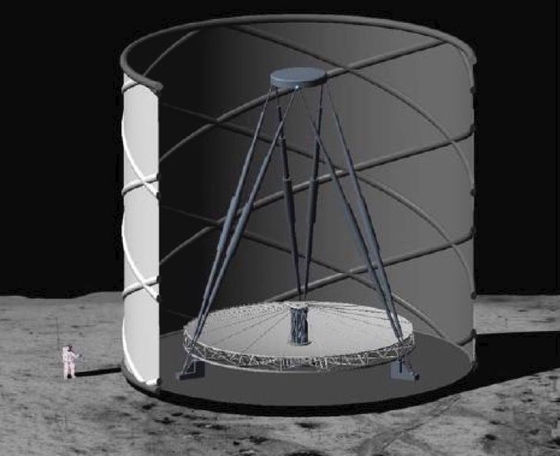The idea of installing the 'ultimate giant telescope' with a diameter of 100 meters on the moon

At the time of writing the article,
[2007.02946] The Ultimately Large Telescope --what kind of facility do we need to detect Population III stars?
https://arxiv.org/abs/2007.02946
Texas Astronomers Revive Idea for'Ultimately Large Telescope' on the Moon | McDonald Observatory
https://mcdonaldobservatory.org/news/releases/20201116
Astronomers to propose putting'Ultimately Large Telescope' on the moon | The Hill
https://thehill.com/policy/technology/526424-astronomers-to-propose-putting-ultimately-large-telescope-on-the-moon
ULT a group of Anna Shaura and his colleagues is the astronomer of the University of Texas at Austin has proposed, once NASA's ' Moon liquid mirror telescope (Lunar Liquid Mirror Telescopes: LLMT)' and huge the call it has a telescope What was made into. Below is an image of the 20-meter-diameter LLMT actually planned by NASA. Astronomers have argued that a larger 100-meter-diameter ULT needs to be built on the Moon.

According to Schowler, ULT 'for example, rotates a huge container of water and floats liquid metal on it.' When the liquid is rotated, the center is dented by centrifugal force, but the basic principle of ULT is to float a liquid metal that reflects light on it to replace a huge concave mirror.
With this method, unlike a general
Schowler and colleagues commented on the need for ULT: 'JWST will approach the time when the galaxy was first formed, but recent theory is that the Population III star , the first star, was formed before the galaxy existed. It is predicted that there was a time when it was difficult to capture the extremely faint light that proved that, even with long exposures by high-performance JWST, so ULT is needed. '

Schowler and colleagues are planning to install ULT in the North or South Pole of the Moon so that they can observe as much light as possible from the same direction. ULT is also expected to automatically perform observations using the power of a photovoltaic power plant installed on the lunar surface and remote control, and transmit the observation data to satellites in lunar orbit.
In a statement announcing ULT, co-author of the paper, Volker Bromm , said, 'It is an important theme to shed light on the beginning of the history of the universe. The appearance of the first star is a primitive beginning in the Big Bang. It will be a guide to the important process of the complicated world and the birth of planets, life, and intellectual beings like us. '
Related Posts:







